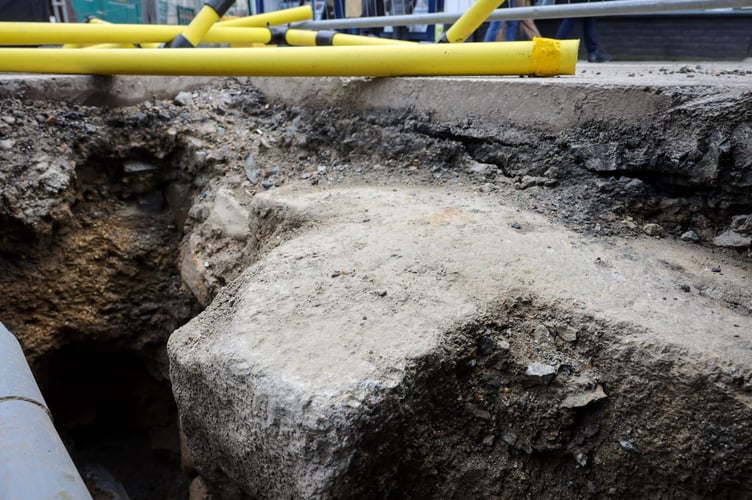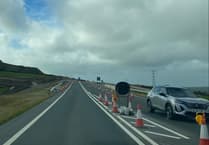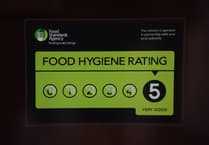A PIECE of Penzance history dating back to the 18th century has been unexpectedly uncovered during roadworks.
Workers for Wales & West Utilities discovered a large granite cross buried beneath the road surface while carrying out excavations for a gas pipe replacement in Greenmarket on Thursday, November 20.
According to Penzance Council, when King James I granted a Charter to Penzance in 1614, the boundaries of the borough were drawn up as a circle radiating half a mile from the ancient Market Cross, which stood in Greenmarket. These boundaries were marked with four stones in 1687, two of which are still in situ today.
In 1829, the Market Cross was moved to allow for the road at Greenmarket to be widened (it can now be found outside Penlee House Gallery and Museum). To retain a marker for the historic centre of Penzance, a granite cross was embedded into the ground, flush with the surface of the road. It is believed this ‘Borough Cross’ was used as the starting point for Beating of the Bounds ceremonies during the mid-1800s; the mayor would stand upon the cross before the civic procession made its way to the four boundary stones.

However, the road was later resurfaced and the Borough Cross marker was buried and forgotten. With some of granite exposed during the gas works, local archaeologist Tom Goskar FSA alerted Wales & West Utilities, and its protocol for the unexpected discovery of items of historical importance was put into place.
More tarmac was cut away so the cross could be measured, photographed and recorded. A surveyor took precise coordinates to find the exact middle point of the cross, which was covered in a thick layer of plastic for protection and carefully reburied. A survey nail has now been placed into the road surface as a small physical reminder of the original centre of the Borough of Penzance.
An archaeological report will be added to Cornwall Council’s Historic Environment Record (HER), so future contractors will be aware of the existence and exact location of the Borough Cross, to ensure it is protected.





Comments
This article has no comments yet. Be the first to leave a comment.